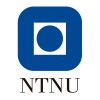
Post-Approval Clinical Trial of the PCM® Cervical Disc
RadiculopathyMyelopathyOn October 26, 2012, the FDA granted Premarket Approval (PMA) for the PCM Cervical Disc. PCM Cervical Disc is indicated for use in skeletally mature patients for reconstruction of a degenerated cervical disc at one level from C3-C4 to C6-C7 following single-level discectomy for intractable radiculopathy (arm pain and/or a neurological deficit), with or without neck pain, or myelopathy due to a single-level abnormality localized to the disc space, and manifested by at least one of the following conditions confirmed by radiographic imaging (CT, MRI, X-rays): herniated nucleus pulposus, spondylosis (defined by the presence of osteophytes), and/or visible loss of disc height as compared to adjacent levels. The purpose of this post-approval study is to evaluate the long-term (7 year) safety and effectiveness of the PCM Cervical Disc.

Phase 2 Efficacy Trial of Z160 in Lumbosacral Radiculopathy
Lumbosacral RadiculopathyThis study will compare Z160 and placebo in patients with Lumbosacral Radiculopathy for safety and efficacy for a period of 6 weeks.

Does Magnetic Resonance Imaging (MRI) Improve Interventional Outcomes for Lumbosacral Radiculopathy?...
Lumbosacral RadiculopathyEpidural steroid injections (ESI) are the most frequently performed procedures in pain clinics. When performing ESI, there is no consensus about how to best select candidates for this intervention, and which level(s) to inject. Some experts advocate basing the injection level on MRI findings, whereas others recommend clinical symptoms. In order to determine whether MRI is necessary before referring patients with chronic LBP radiating into the leg(s) for pain management interventions, we will perform a randomized comparative study involving 131 patients with chronic low back and leg pain who are clinically candidates for epidural steroid injections into two groups. Group I will receive two ESI based solely on historical and physical exam (PE) findings. Group II will receive treatment only after MRI is reviewed. The investigators' hypothesis is that MRI will not have a significant effect on treatment outcome, and will have minimal impact on patient care.

The Norwegian Cervical Arthroplasty Trial
RadiculopathyCervicalThe study will compare cervical arthroplasty with cervical discectomy and fusion, in the treatment of cervical radiculopathy. The 0-hypothesis is that there is no difference between the two methods, when comparing primary and secondary outcome variables.

Safety Study of Preservon-Treated Bone Implants for Cervical Fusion in the Treatment of Cervical...
Cervical RadiculopathyMyelopathyThe purpose of this study is to compare the safety and efficacy of Preservon(TM) treated allograft bone dowels to traditional freeze-dried allograft bone dowels (control) for fusion of degenerated cervical intervertebral discs in the treatment of cervical radiculopathy or myelopathy. Patient follow-up will be conducted at 6 weeks, 3 months, and 6 months. At 3 months after surgery, the implanted bone dowels will be assessed for subsidence; at 6 months after surgery, the implanted bone dowels will be assessed for fusion. Patients will complete questionnaires and x-rays taken at each visit. The degree of subsidence and rate of fusion will be assessed based on the evaluation of the x-rays taken. The x-ray evaluation will be conducted by a neurosurgeon who is blinded to the type of treatment that each patient has received.

Effectiveness Study of Physical Therapy as an Adjunct to a Lumbar Therapeutic Selective Nerve Root...
Sciatic NeuropathyRadiculopathy1 moreThe purpose of this study is to determine if participation in physical therapy in conjunction with a selective nerve root block in the lumbar spine is more effective than just receiving the injection alone for patients with low back and leg pain from a disk herniation (sciatica).

Sustained Natural Apophyseal Glides and Mechanical Cervical Traction in the Management of Cervical...
Cervical RadiculopathySustained natural apophyseal glides (SNAGS), is a form of manual therapy, involved a combination of a sustained facet glide with active motion, followed by overpressure. Natural apophseal glides (NAGS), a modification of SNAGS, involves a mid to end-range facet joint mobilisation applied anterocranially or posterioanteriorly along the plane of treatment, combined with a small amount of manual traction which increases movement within the spine, and decreases symptomatic pain . A study reported that Natural Apophyseal Glides (NAGS) and Sustained Natural Apophyseal Glides (SNAGS) demonstrated significant effects in reducing pain and disability in subjects with chronic neck pain . This technique, SNAGS, is however an evolving manual therapy techniques which its effectiveness has not been thoroughly investigated in cervical radiculopathy treatment raised author's curiosity to compare and document efficacy of SNAGS with cervical traction in Nigeria since comparative studies evaluating SNAGS and manual cervical traction relative efficacies among Nigerians are yet to be documented if at all available. Consequently, the quest is to look for a quicker and a better way of relieving cervical radiculopathy in this environment . The more reason why we have to compare it with a conventional mechanical traction.

Comparative Trial Via Tranforaminal Approach Versus Epidural Catheter Via Interlaminar Approach...
Cervical RadiculopathyDo cervical epidural steroid injections done by transforaminal catheter targeted approach improve pain and function in patients with cervical radicular pain?

Corticosteroid Lumbar Epidural Analgesia for Radiculopathy
Lumbosacral Radicular PainThis is a research study of SP-102, an experimental medication designed to relieve pain in patients with a specific type of leg pain. The medication is given once by your healthcare professional, with a possibility of a second injection as early as about 1 month after the first treatment. The purpose of the study is to measure how well a single injection of the experimental medication, SP-102, relieves pain. The study will also investigate the side effects of SP-102.

Threshold Response of Lumbar Selective Nerve Root Block in Predicting Good Outcome Following Lumbar...
Back PainRadiculopathy Lumbar1 moreSNRB, as measured by the change in pain and objective functional ability, can solicit crucial information regarding a patient's clinical picture and can predict a patient's outcome post-surgery. By using the walk test as an objective functional assessment, the aim is to better standardize the threshold for a positive response to SNRB. In summary, SNRB, despite utilized frequently in the diagnostic work-up with patients with lumbar radiculopathy, vary widely in their sensitivity and specificity. The reasons, as outlined above, are multifactorial. The proposed study aims to minimize the known limitations of these injections and prospectively define their positive and negative predictive value in a homogenous group of patients undergoing surgery for lumbar foraminal stenosis and radiculopathy. The design will define a threshold of response utilizing both subjective and objective measures and more accurately predict excellent results following surgery.
